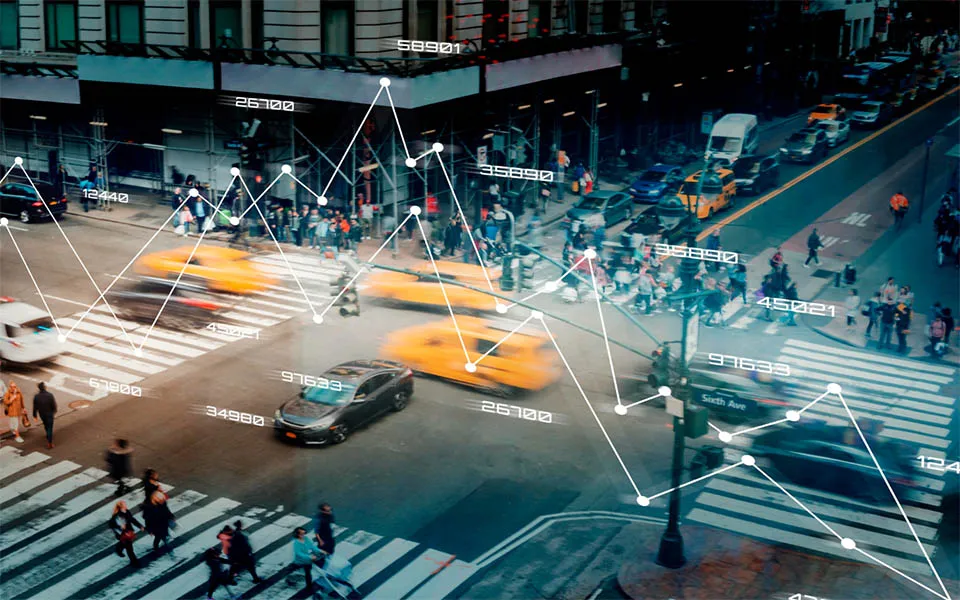The Transformative Era of Wireless Factories: A Comprehensive Overview
In recent times, technological advancements have ushered in a new era for manufacturing, where the integration of wireless networks has become indispensable. This article delves into the concept of a wireless factory, elucidating its intricacies, functionalities, and the profound impact it has on modern manufacturing processes. Specifically, we explore Horizon’s innovative solution architecture designed to streamline the deployment of cellular wireless in enterprise environments.

Understanding the Wireless Factory
A. Definition and Components:
A wireless factory represents a paradigm shift in manufacturing communication, encompassing various wireless technologies on the production floor. This cutting-edge environment relies on a combination of Internet of Things (IoT) sensors and wireless connectivity, utilizing Wi-Fi, LoRa, 5G, and 4G LTE networks. These interconnected sensors facilitate real-time data collection from machinery, systems, and personnel, establishing a foundation for Industry 4.0.
B. Key Technologies:
- Wi-Fi, LoRa, 5G, and 4G LTE Networks: These technologies form the backbone of a wireless factory, enabling seamless communication between devices and systems.
- Artificial Intelligence (AI): The collected data undergoes processing, and AI plays a pivotal role in extracting meaningful insights. Automated responses can be triggered based on changing conditions or deviations from Key Performance Indicators (KPIs).
- 5G Technology: Specifically tailored for low latency and high-performance networking, 5G supports advancements like Autonomous Guided Vehicles (AGVs), production robots, and augmented reality, enhancing the overall efficiency of factory operations.
Wireless Factory Use Cases
A. Asset Tracking:
Utilizing Radio-Frequency Identification (RFID) tags, businesses track the location, usage, and condition of essential tools. This enhances productivity by facilitating proactive replacements and timely calibration.
B. Augmented Reality:
Augmented reality headsets empower maintenance staff with hands-free live insights, accelerating problem-solving processes and reducing overall downtime.
C. Autonomous Vehicles:
The deployment of autonomous vehicles, including robotics and driverless transports, not only cuts labor costs but also ensures enhanced staff safety and operational efficiency.
D. High Performance and Availability:
Private LTE or 5G networks offer factories unprecedented control over their cellular resources, allowing precise allocation based on application priorities even during peak traffic hours.
Benefits of Wireless Factories:
A. Faster Changeovers in Flexible Automation:
The speed, low latency, and ample bandwidth of 5G networks significantly improve changeover times in flexible automation, facilitating real-time tracking of completion times through live data.
B. Scalable Automation:
Wireless factories provide a scalable model for launching new locations, simplifying the deployment of application-aware technology and reducing the manual configuration burden on IT staff.
C. Improved Maintenance Efficiency:
Industrial IoT sensors and augmented reality troubleshooting contribute to a substantial reduction in downtime. Proactive signaling of potential failures allows maintenance teams to address issues before they escalate, eliminating the need for manual checks.

Challenges in Wireless Factories:
A. Electromagnetic Interference:
While wireless technology offers flexibility and cost-effectiveness, it faces challenges such as electromagnetic interference in manufacturing environments. Strategic placement of 4G LTE and 5G access points, operating on interference-free frequencies, can mitigate disruptions. Innovative solutions, like Horizon’s 5G LAN, employ machine learning to continuously monitor and self-heal network connections in the presence of interference.
B. Legacy Hardware:
Some factories hesitate to embrace wireless solutions due to legacy hardware. However, the advent of IoT sensors compatible with 5G networks has made it feasible to integrate these technologies with older analog machines without the need for extensive and costly upgrades.
Horizon Powered: Simplifying Wireless Factories
In a strategic partnership with manufacturing facilities, Horizon Powered presents a comprehensive solution for private cellular 4G LTE and 5G wireless networks. This turnkey offering seamlessly integrates with existing Layer 2 (L2) and Layer 3 (L3) computer networks, ensuring a swift and efficient deployment process.
Streamlined Deployment with Horizon Powered
A. Turnkey Solution:
Horizon Powered collaborates with factories to deliver private cellular networks effortlessly. Cellular access points, integral to the Horizon Powered 5G LAN network, can be rapidly deployed across the factory floor. This ensures the automatic enforcement of quality of service requirements for critical IoT applications, coupled with the proactive monitoring of throughput and latency parameters.
B. Cloud Networking Principles:
Incorporating cloud networking principles, the Horizon Powered 5G LAN transforms the implementation of private cellular wireless for IoT architectures into a straightforward, out-of-the-box experience. This approach allows for direct integration with existing enterprise network security and Quality of Service (QoS) policies, facilitating installation alongside current wireless and IT infrastructure without disrupting ongoing business operations.
Integration with Existing Infrastructure:
Integration with Existing Infrastructure
Horizon Powered ensures a seamless integration process by aligning with existing wireless and IT infrastructure. This strategic compatibility extends to enterprise network security and QoS policies, fostering an environment where the implementation of private cellular wireless for IoT architecture harmonizes effortlessly with the established technological framework.
Building Future-Ready Factory Networks with Horizon Powered
For those envisioning a forward-looking factory network, Horizon Powered stands ready to assist. Utilize our private cellular wireless network planner to estimate the optimal size of your Horizon Powered network, both indoors and outdoors. Alternatively, explore the capabilities of a Horizon Powered 5G LAN solution through a comprehensive test-drive.
Conclusion
In the journey towards wireless factories, Horizon Powered emerges as a key player, offering a turnkey solution for private cellular 4G LTE and 5G wireless networks. With a commitment to seamless integration, proactive monitoring, and alignment with existing infrastructure, Horizon Powered Products, empowers factories to build future-ready networks that embrace the potential of Industry 4.0. Whether estimating network size or exploring a test-drive, Horizon Powered ensures a simplified and effective transition to the wireless future of manufacturing.
The evolution towards wireless factories signifies a pivotal moment in the manufacturing landscape. The convergence of IoT, advanced wireless technologies, and artificial intelligence not only enhances operational efficiency but also opens up new avenues for innovation and scalability. While challenges such as electromagnetic interference and legacy hardware persist, the benefits of wireless factories in terms of flexibility, efficiency, and real-time insights outweigh these hurdles. As Industry 4.0 continues to unfold, the adoption of wireless factories becomes not just a choice but a necessity for enterprises aiming to stay at the forefront of modern manufacturing.








